“Oh, hey, look over there, a bison.” A stocky Englishman said with field glasses glued over his face. Telescope lenses loomed like missile launchers in the general direction, followed with muffled ‘ooh’ and ‘aah’ from behind viewfinders.
“Hey, a bison.” A dozen others repeated like litany.
The tracker was now over the faux pas and joined the chorus with a corrected, ‘Look, there bison’ chirp. The happy chap had earned his tip.
Excitement from spotting wildlife did not always come with such happy endings. Only three years ago a sightseeing boat capsized drowning 45 tourists. The boat whose maximum capacity was 74 was carrying 87 tourists across the deep lake right in centre of the wildlife sanctuary for sightseeing at the time of the mishap. Apparently the driver had shouted out a sighting of a herd of wild bison which emerged from the thick forest surrounding the water body and all the tourists had rushed to one side of the boat toppling it. Lessons were learnt, as was evident: there were less than 50 passengers in our boat, bright orange lifebuoys were plonked down our necks as soon as everyone was seated and standing up was discouraged with a firm hand on the shoulder.
We had reached Thekkady that afternoon from Kochi – a winding, lush green drive of almost 200 kilometres. En route we had stopped by a toddy shop; a friend had advised that the best time to savour the purest toddy was early mornings. It was when the tappers had just disentangled from the coconut and palm trees and the toddy was still fomenting fresh in the gourd-like containers latched to their loins with coir; toddy shop owners would be yet to transfer its contents into the barrels which either contained leftover toddy or could be doused with liberal doses of several ‘mixes’ to make it extra potent. These ‘mixes’ would be variably salvaged chemicals from extinct batteries or simply arrack – depending on whom you asked and where. Sometime back I even got ‘centipedes’ as a possible potency enhancer from a toddy shop near a touristy beach. From a roadside co-drinker in Andhra Pradesh, I got a simple ‘acid’ for answer. He was too gone to tell me which acid, specifically. Or maybe he did tell me.
Numerous homestays line the road with at least a dozen of them with ‘spice’ in their names. We stopped at one of them and our windpipes were assaulted by the strongest aroma wafting thickly from the stacked supply of black pepper, cinnamon, cloves and cardamom. Besides the spices, there was also the famed tea – freshly picked and brought down from the plantations that expanded in all directions. The friendly proprietor sat us down and served us some sample brew.“We export our tea to all parts of the world,” he offered. “It is processed in our own factories personally supervised by me.” He waited a moment for probably some kind of appreciation. I smiled at him for the tea – a Twinings Classic but with more body and flavour – and he launched on a long discourse which, if I had taken notes, would have probably made me an informed speaker at world tea conferences.
The Periyar Wildlife Sanctuary or simply ‘Thekkady’ is a 777 sq km tiger reserve, the most popular wildlife sanctuary in south India. Though billed as a ‘tiger reserve’ spotting a tiger here is a rarity. Some 10 years ago while a student at the Kerala University campus I with a friend applied for the public participation in a tiger census survey advertised by the forest department. We were selected. The training included how to count the tigers from their pugmarks – we would pour freshly mixed plaster of Paris into the depression on the ground which would solidify after a few minutes. We were also trained to watch the tail of the tiger in the eventuality of coming face-to-face with one; a small twitch would mean that it was measuring the distance it had to leap to make you a meal. We had to shift positions soon after this twitch happened and the tiger would land where you stood. As simple as that. For an elephant, just run around in circles. Equally simple. But the biggest fear was the now-executed forest brigand Veerappan who was taking hostages almost as a hobby during those days; our training didn’t include what to do when kidnapped.
“That’s why we are sending two armed guards with you,” pointed out a forest officer. The armed guards’ guns were rusted and antique and later on they confessed that their only training was to shoot in the air to scatter an agitated lot of wild jumbos. Nevertheless, we completed the survey in the interior-most part of the reservoir where no tourist or public has access to otherwise. Even during the one week there, we didn’t see any tiger but collected 15 pugmarks from six different tigers. So sum up the chances of spotting big game when you are in a wide, canopied boat, chugging across the water, lit up with flashes and casting a thousand shouts of wonder.
On our way to embark our boat desirously named the ‘Jalakanya’ meaning the ‘virgin of the waters’, we passed by a small signage that read ‘Cafe Periyarensis’ which sounded more like some waterborne disease than a snacking joint which it was. A boat had just returned from its scheduled hour-long ride and the tourists were disembarking. Being a popular honeymoon spot, there were several newly married couples clicking each other every two steps or so. Children running amok were sternly reprimanded by the parents; the lesser fortunate ones were held in vice-like grips by their grandparents. A headcount was taken by the helper as soon as we were seated and the driver announced in halting English that no one was to neither stand up nor make any sudden movements. We were also reminded that the quieter we were the better our chances of seeing wild animals. The Indians all nodded their heads while the Germans too nodded their heads and turned to their guide for translation.Just as we were about to give up on our attempts to spot game, a crew member whose job was to keep an eye on shifty passengers announced with as much interest as he could muster, ‘Wild elephant.’ A forlorn looking elephant was on the other side of the bank making its way towards the water. But probably seeing the boat it stopped short and instead made a beeline back to the trees. Halfway it paused as if it suddenly remembered something and came back, this time tracing a path parallel to the shore. It was still indecisively gambolling about a few metres away from the water on our way back – a full hour later. Probably it was waiting for the prying cameras to clear off before taking a skinny dip.
One fascinating thing about the ride is the numerous tree trunks that alight from the water at weird angles – like ballerinas striking impossible poses. These are the remnants of trees before the Mullaperiyar Dam was built across the River Periyar which in turn gave rise to the lake over which we were now traversing. Taking a cue from the driftwood collection my parents have, I named them. Black Swan, Bapu-ji and Marilyn were some of the more interesting and printable ones I godfathered. Though over 300 species of birds have been counted in Thekkady, we spotted only the kingfishers, cormorants and the Malabar Hornbill – each of which were using the jutting trunks to espy the water for fish. Since commercial fishing is banned in these waters, salmon and trout abound here, a delight for the angler. And angling you can if you check into the Lake Palace, a palatial building which was a summer retreat of the erstwhile Maharaja of Travancore, which is smack in the middle of the lake accessible only by boat. Make sure you are friendly with the manager.We were staying at the Aranya Nivas belonging to the Kerala State Tourism Development Corporation, a refurbished building from the colonial era. Sunny, who had been working here since the property opened doors over three decades ago, told us about the days when it was dangerous to venture out after 5 p.m. While the tuskers roamed freely, there were also the occasional leopard and fox which came out for the gaur and sambar out to quench thirst. Today you get to spot a Nilgiri Langur from your open window and the lion-tailed macaque if you are lucky. And awake.
Topping off the evening was a cultural performance by the tribals at an arena a few kilometres away. Any kind of development in the forest areas brings the tribals and the government at loggerheads with each other. During my visit to Nepal, I had learnt about the bloody confrontations between the Tharu tribe and government’s armed force when Chitwan was declared a national sanctuary. But here there was neither sign nor history of struggle of any sort. Instead, the ethnic tribes consisting of the Mannans and Paliyans seemed only eager to invite us to their ancestral land and even take us through a chapter of their culture. Sadly in an auditorium of a 100-plus capacity, there were less than 10 of us. Nevertheless the performance lasted the promised hour and was followed by an invite from the warm community members to dance with them and take photographs. I have seen performances by the Tharus in Nepal, the Naga communities during the Hornbill Festival and now seeing the Mannas and Paliyans shake a leg, I couldn’t help but be awed by the uncanny similarities between their steps and the stories in their songs. I returned from the performance convinced that we all go a long way back.

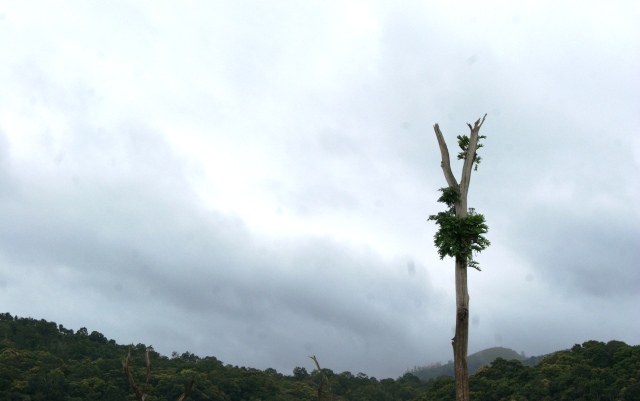
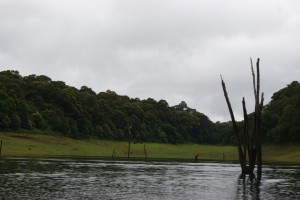
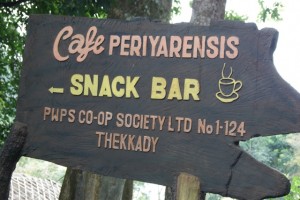
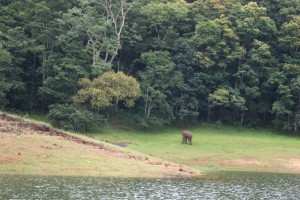
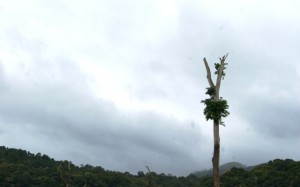
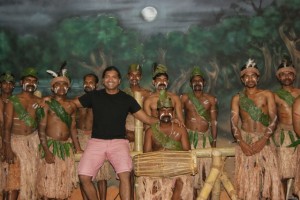









I have heard a lot about Thekkady, will plan a trip next year. Nice informative post 🙂
Thank you Puru… Yep, Thekkady is a must-do in Kerala!